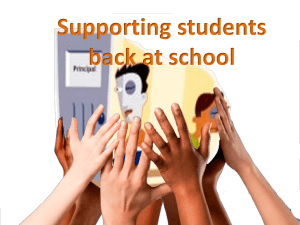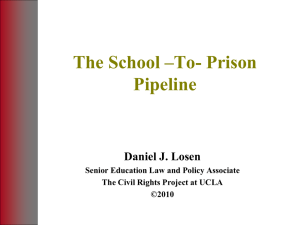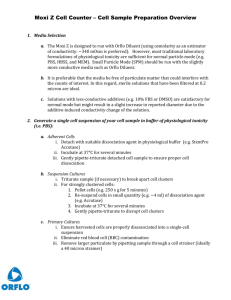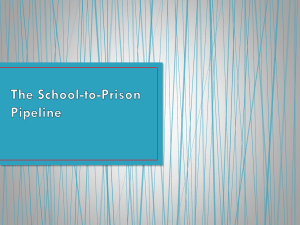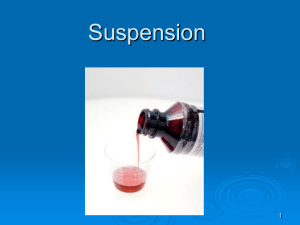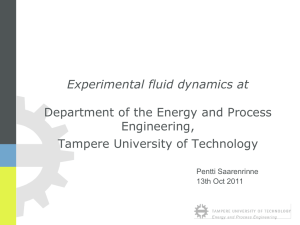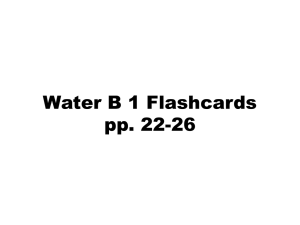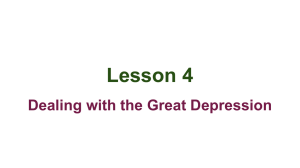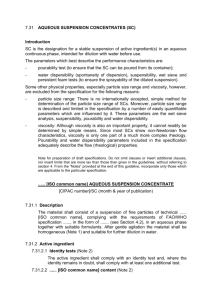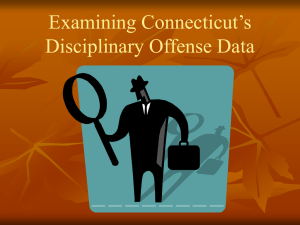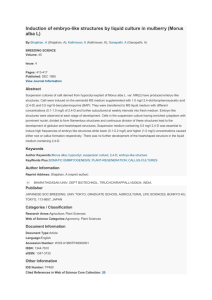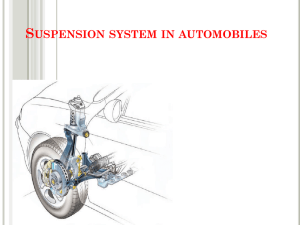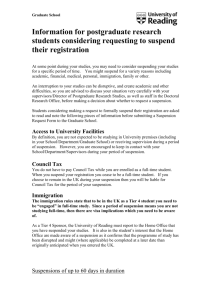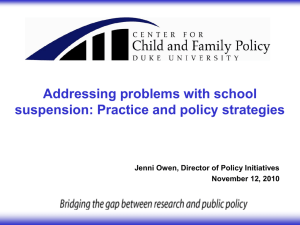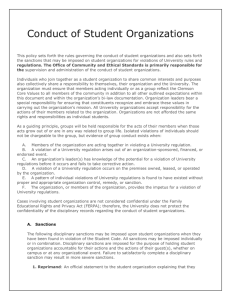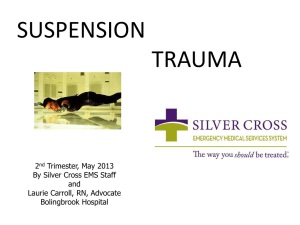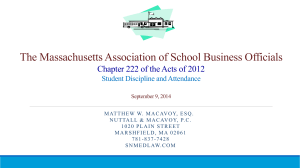NeuroPsyche - Glenfield Suspension Centre
advertisement
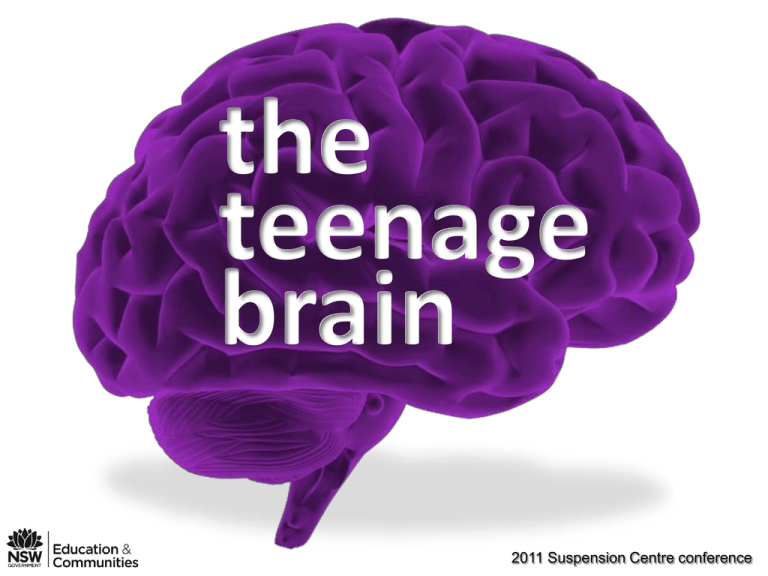
the teenage brain 2011 Suspension Centre conference Explaining student behaviour 2011 Suspension Centre conference Psychoanalytical Explaining student behaviour Behaviour modification Neuroscience Cognitive behaviourists Solution focussed Positive psychology 2011 Suspension Centre conference One of the most exciting discoveries from recent neuroscience research is how incredibly plastic the human brain is. For a long time, we used to think that because the brain is already 95 percent of adult size by age six, that things were largely set in place early in life. Increases in grey matter in the brain from 5 to 20 years And now we realize that isn't true; that even throughout childhood and even the teen years, there's enormous capacity for change. From http://www.pbs.org/wgbh/pages/frontline/shows/teenbrain/interviews/giedd.html#ixzz1eFA3pzly 2011 Suspension Centre conference We think that this capacity for change is very empowering for teens. The next step will be, what can you do about it, what can we do to help people? What can we do to help the teen optimize the development of their own brain? From http://www.pbs.org/wgbh/pages/frontline/shows/teenbrain/interviews/giedd.html#ixzz1eFA3pzly 2011 Suspension Centre conference Brain research tell us . . . . Learning environments must provide emotional safety Stress is toxic Boredom is as toxic to the brain as stress Construction of individualized meaning promotes higher level intellectual functioning Differentiation offers the best opportunity for appropriate use of challenge. Differentiation offers the best opportunity for building on students’ interest and need for engagement. Differentiation gives individual students meaningful experiences. 2011 Suspension Centre conference Teens (left) used less of the prefrontal (upper) region than adults (right) when reading emotions What emotion shownthe by the person in thishere image? 100%isofthe adults identified emotion shown as fear Only 50% of adolescents identified the emotion as fear. Many typically said that they saw shock or confusion or sadness. 2011 Suspension Centre conference More from the experts . . . . Let’s look at 3 perspectives on how the teenage brain works and the implications this has on the way we remodel and support changes in attitude and behaviour: The Teen Brain: the neuroscience of adolescent behaviour Catalyst The brain that changes itself - Norman Doidge (Lateline – ABC) Neuroplasticity What we can learn about learning from digital games Gamification 2011 Suspension Centre conference The Teen Brain: the neuroscience of adolescent behaviour Catalyst 2011 Suspension Centre conference The brain that changes itself - Norman Doidge (Lateline – ABC) Neuroplasticity 2011 Suspension Centre conference What we can learn about learning from digital games Gamification 2011 Suspension Centre conference More information and references Catalyst (ABC TV) 2005 – The Teen Brain at http://www.abc.net.au/catalyst/stories/s1424747.htm PBS TV 2002 - Inside the Teenage Brain found at http://www.pbs.org/wgbh/pages/frontline/shows/teenbrain/ Lateline (ABC TV) 2009 – The brain that changes itself at http://www.abc.net.au/lateline/content/2008/s2558852.htm Doidge, N. 2007 The Brain That Changes Itself : Stories of Personal Triumph from the Frontiers of Brain. Science Baker & Taylor; USA Weinberger, D., Elvevag, B & Giedd, J. (2005) The Adolescent Brain – a work in progress. Accessed online at www.thenationalcampaign.org/resources/pdf/BRAIN.pdf Dunn, B (2010) Teaching the teen brain. Online resource accessed at http://www.weteachwelearn.org/2010/05/teaching-the-teen-brain/ 2011 Suspension Centre conference
